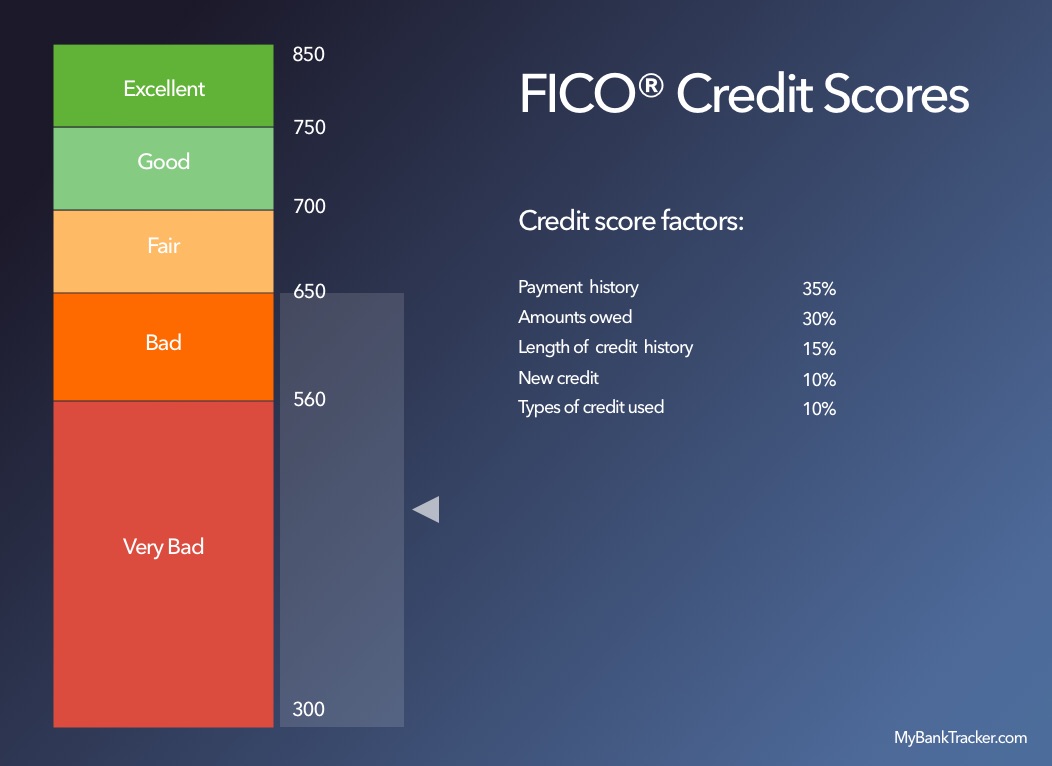How to Use Personal Loans to Refinance Student Loans
The average recent college graduate has more than $37,000 in student loans, which, for most degree holders, can take years and years to repay.
Refinancing student loan debt is a move that can help to alleviate the financial pressure of student debt.
Just like we’ve seen people use personal loans to great effect to refinance their credit cards and consolidate other types of debt, you can use one to refinance your student loans, too.
But is a personal loan the right choice for you?
Learn how it works and the find out the advantages and disadvantages of refinancing student debt with personal loans.
How to Refinance Student Loans
Barring a few exceptions, the upside of personal loans is that you can borrow and spend them on just about anything your heart desires
Commons uses include credit card debt consolidation, home improvements, weddings, vacations, or major purchases.
Generally, we do not recommend that personal loans be used to pay for frivolous spending that you know you cannot afford.
With student loans, however, you may be able to use them to save money on interest.
In a nutshell, this is how it works:
- Find and apply for a personal loan at an interest rate that is lower than the rate on your student loan(s).
- With successful approval, your funds should be disbursed to your bank account within 7 days (depends on lender).
- Use those funds to pay off part or all of your student loan(s).
The Advantages to Refinancing
Here are some benefits of paying off student loans with a personal loan:
Loan amounts are generous
Personal loans can range from $1,000 to $100,000, enough to cover a big portion of even the largest student loan amounts.
So are interest rates
Borrowers who have great credit can qualify have a promising chance of locking into a lower, fixed interest rates.
Faster repayment periods
Many personal loans have a shorter repayment schedule than a student loan, preventing interest from getting the chance to compound and become cost ineffective.
Release cosigners
If you can qualify for a personal loan on your own, it puts financial power in your hands, so you can relieve any cosigners on your student loans the burden and responsibility of shouldering your debt.
Bankruptcy optional
Unlike student loans, personal loan balances can be discharged through bankruptcy proceedings.
Above all, the biggest benefit to using a personal loan is that you can consolidate and combine your student loans into one payment, using one personal loan payment to pay off numerous student loans.
You might have two, five or 10 different student loans to keep track of, all with different repayment terms, conditions and interest rates. In short, a confusing mess.
One personal loan can consolidate multiple student loans into one, simple, convenient payment per month.
The Disadvantages to Refinancing
Keep in mind some potential drawbacks to bringing in a personal loan to pay your student loans.
One is that you’re taking on more debt. While it’s basically a case of replacing/canceling one piece of debt with another, it could increase the amount of credit you use, which can negatively impact your credit score.
A personal loan also doesn’t have some of the built-in benefits of a student loan:
Personal loan interest isn’t tax deductible
Student loan interest can be deducted.
Loss of financial hardship plans
With student loans, there’s the privilege of opting for student loan forbearance, deferment, government-sponsored payment plans, or other options. These plans may allow you to pause or reduce your student loan payments.
What Type of Student Loan Do You Have?
There are two main types of student loans for college tuition: federal and private loans. You might have one, or the other, or a combination of both.
Federal loans are public loans, and as they’re named for, this type of loan is offered by the U.S. federal government.
Federal loans are granted to all borrowers who apply, regardless of their income, credit score, or credit history. It’s one way to ensure that everyone gets the opportunity to pay for college without meeting strict standards
You’ll also find two types of federal student loans: those that are subsidized, and ones that are unsubsidized.
To ‘subsidize’ is to assist in the payment of something and with a Direct Subsidized Loan (its proper name), the government pays for your interest while you’re still in school.
This can be a great help to students since interest continues to accrue the minute you start classes.
While everyone qualifies for a federal student loan, only borrowers that demonstrate financial need can be granted a subsidized loan. Only undergraduate — not graduate — students qualify for subsidized loans.
An unsubsidized loan is one that Uncle Sam doesn’t help pay for, so you’ll be responsible for paying all the interest on your loan balances.
The good news is that all students, undergrad, grad and otherwise, qualify for unsubsidized loans, and financial hardship isn’t a prerequisite.
Private loans are offered by private lenders, just as you’d find with a car loan or a mortgage.
There’s no government or U.S. Department of Education involvement with a private loan, meaning that borrowers work directly with their lender in repaying their debt.
The biggest thing in common between public and private student loans is that they make college accessible for Americans who can’t afford to pay for school out of pocket. A primary difference, however, is in their interest rates.
Private loans may offer borrowers the chance to work out unique payment plans and terms with their lender that a federal loan might not provide.
Private loans may also have variable rates, and interest rates differ from lender to lender. However, private student loan interest rates do tend to be higher, with some climbing as far as 18% — a number that can quickly increase an outstanding loan balance the longer it goes unpaid.
When It Makes Sense
To be fair, the majority of student loans have an extremely low interest rate, especially for federal student loans. Therefore, refinancing makes the most sense for student loans that carry higher interest rates, which is likely with private student loans.
Below is an example of how student loan refinancing can help you save money in the long run. This is a scenario for a borrowing amount of $30,000 for 5 years:
Comparing Personal Loans and Student Loans
| Type of loan | Unsecured personal loan | Subsidized federal Stafford loan | Private student loan |
|---|---|---|---|
| Interest rate | 5.25% | 6.8% | 8.5% |
| Monthly payment | $570 | $591 | $615 |
| Total interest paid | $4,175 | $5,473 | $6,930 |
| Avg. total tax benefit (after deduction) | $0 | $1,370 | $1,735 |
| NET COST | $4,175 | $4,103 | $5,195 |
*Your monthly student loan payments may vary depending on the repayment plan that you’ve chosen. As a result, your interest paid and cost savings may differ as well.
Income-based repayment plans and loan forgiveness programs
There are instances when using personal loans to refinance student loans are not recommended.
One of them is when you’re on an income-based repayment plan.
This type of repayment plan is designed for borrowers that cannot afford payments under a traditional repayment plan.
Therefore, the payment amounts are adjusted to allow for reduced payments based on income.
If you’re already unable to make regular payments on a student loan, repayments on a personal loan will likely to be much more difficult.
Another instance is when you’re on track for a loan forgiveness program.
To be eligible for loan forgiveness, these programs require that you show proof of payment toward an eligible student loan. Once you refinance a student loan with a personal loan, you become ineligible for student loan forgiveness.
Your Credit Score and Income Matter More
When you applied for a student loan, it is most likely that you haven’t yet established good credit and your annual income was practically $0.
Student loans are less reliant on these factors because they’re designed for people who are pursuing higher education — people who don’t yet have solid financial credentials. It’s also why most of them cannot be discharged in bankruptcy.
But, once you’re seeking to refinance your student loans, your credit score and income will play significant roles in chances of approval.
For the most part, personal loans require fair to good credit (a FICO credit score of around 650).
Unfortunately, hitting the bare minimum requirements will yield the highest interest rates and low borrowing amounts for personal loans.
In order to qualify for a great interest rate and higher borrowing amounts, you need to exhibit good to excellent credit (a FICO credit score of around 700 or higher) and show proof of high income.

Weigh Your Options
Prioritize, prioritize, prioritize. It’s the one thing you should make your priority if a student loan is on the books, time is ticking, interest is maturing, and you want to save money with a personal loan.
Shop around for personal lenders and see if they allow using their loans to pay off student loan debt. Some lenders may not offer it as an option.
For the lenders who do offer a personal lending option for student debt consolidation, compare interest rates and terms closely. The goal is to lock in an APR that saves you money over what you’re currently paying on your student loans.
Finally, look at some of your student lending benefits first. Have you looked into deferment? Income-driven repayment? Student loan refinancing? One or all of those could drastically shave dollars off your monthly loan payments where a personal loan isn’t needed.
However, if none of these make a dent in your balance, or, you’re still struggling with debt, a personal loan may be the answer only after you’ve explored some of these alternatives.
Getting Approved for a Personal Loan
You can find a personal loan through an assortment of banks, credit unions, and online lenders.
When applying, be as thorough as possible in the information you provide. It can expedite the application process, move it along quickly and smoothly, and improve your chances of getting approved. Be sure to have these documents ready and on hand:
Personal identification
A driver’s license, ID card, birth certificate, current passport, or Social Security card. They should include your date of birth, and in some cases, your mother’s maiden name.
Proof of current street address
A utility bill, a mortgage or auto loan statement, etc. prove that you’re at a fixed location you can be reached at. You may also be asked to provide previous addresses, plus your current employer’s address and contact information.
Proof of income
Pay stubs, tax forms or bank statements are necessary financial documents that help lenders decide if you earn enough to repay the loan.
Personal Loan Calculator
Estimated Interest Personal Loan Calculator
Final thoughts
If you can’t get approved just yet for a personal loan, keep at it. Continue paying off your credit-based expenses, including your student loans, all of which play a role in strengthening your credit score, and improving your ability to get a personal loan in the near future.
When you apply for a personal loan and get the good news that you’ve been granted funding, look at it as the loan that your student loans should have been in the first place — a chance to affordably pay down a new balance, with better terms, lower interest and a shorter repayment schedule.
In time, making such a smart choice with a personal loan means you’ll be debt-free and on the road to even smarter financial achievement.

